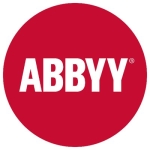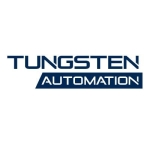What is our primary use case?
I have worked for two companies in the past who have used Automation Anywhere. Both primary use cases have fallen under finance and accounting, with a lot of finance and accounting based functions primarily for data processing:
- Extracting data from different systems.
- Aggregating data.
- Doing analysis on data.
- Porting data into other systems.
- Doing accounting based functions, such as reconciliations and transaction uploads.
How has it helped my organization?
- At the most granular level, automating people's daily tasks has been helpful by freeing them up to do higher value-add activities, which is definitely beneficial.
- On a larger scale, the tool is improving processes overall by making systems and processes more stable. It returns hours, time, and money back to the business.
What is most valuable?
- From a developer perspective, the user interface is user-friendly and easy to use.
- From the admin side, the Control Room is simple to use. There is a lot of functionality with a lot of analytics and oversight that you can draw from just simple web pages. It is definitely the most useful.
What needs improvement?
Integrating this solution with other application has been good for the most part. A lot of the issues that I have are related to the actual applications than with Automation Anywhere. Any additional functionality which comes out in regards to integrating it better with more widely used applications, like Salesforce, Oracle, or Workday, is definitely beneficial and helpful at the end of the day.
I have been hearing great stuff in terms of upping the product's cognitive game. Anything that can be done to work with unstructured data sets would be helpful, like increasing the subjectivity of bots, and moving away from solely rules based processes to anything which actually requires subjective judgment. If Automation Anywhere could code that into the bot design and framework, having it sort of act like a human, that would be helpful.
Anything that can be done to increase the stability from a system standpoint in regards to large-scale systems, which are being used by a number of applications, e.g., Salesforce or Workday. This would help us, as well.
Automation Anywhere should work to continue maintaining its ease of use.
Buyer's Guide
Automation Anywhere
April 2025
Learn what your peers think about Automation Anywhere. Get advice and tips from experienced pros sharing their opinions. Updated: April 2025.
845,589 professionals have used our research since 2012.
For how long have I used the solution?
What do I think about the stability of the solution?
My current and previous companies have had stability issues.
I started on version 11 of Automation Anywhere, then when I joined a new company, they used version 10. Therefore, I have seen both versions. With version 11, some of the development stuff was a bit clunky in terms of the tasks that we were performing. They didn't perform as expected, or perform properly, when we were developing the bot. Then, once we deployed it into production, the bot would run for a specific process and work properly about 10 times, but on the eleventh time, it would break. It was always random. Nothing had changed at all, in regards to our system, architecture, or infrastructure.
On version 10, things had been a bit more stable. We made sure that we build code which effectively captures all use cases and exceptions, but stability is key. When you're building automated solutions using bots, people are already skeptical and hesitant to adopt them. Anything you can do to improve the stability is definitely helpful. Ultimately, it depends on what your goal with RPA is. If you're using RPA as a stop-gap to build large-scale system integrations, then it's very helpful. If you're using it as a be all, end all, then stability is your number one concern.
What do I think about the scalability of the solution?
The product is definitely scalable. A lot of it will depend solely on the architecture of the organization who is implementing it. If you are using on-premise servers, it is much harder to scale up versus if you are using cloud-based architecture. Automation Anywhere provides the tools and expertise to make it scalable.
At the previous company that I was with, we had a pilot in September 2017 with approximately 20 bots. Then, in production, it took nine to ten months. With the organization that I'm currently with their process took a little longer, but they were standing up their COE initially. So, they went from pilot to about 30 bots in production. This took roughly a year and a half to two years.
With regards to process, there is a lot involved. If you want to have a successful RPA and Automation Anywhere implementation at the ground level, you need to lay the foundation and the framework. Therefore, you need to build your center of excellence, and make sure you have dedicated people who will focus on whatever their role is: People related to support, governance, development, architecture, oversight (who will work with your security teams to get your reviews done), and IT personnel (who will provision servers and licenses and do Control Room administration). There is a lot involved to take it from inception to a successful program.
How are customer service and support?
The technical support has been helpful from what I've used. Initially, when we were exploring solutions and using Automation Anywhere, as a vendor, their technical support seemed to be lacking a bit. It seems like in the last few months or year, they have been stepping up their game, in this regard. They are very prompt to follow up with issues and want to make sure issues are thoroughly resolved before they close tickets and move on, which has been helpful.
Which solution did I use previously and why did I switch?
At both companies, we never used a different solution before Automation Anywhere.
We had individuals working at the companies who spent years going to school, but could not necessarily download reports nor input data into spreadsheets, and this was something that could be easily automated. We wanted to free up users and people to perform higher value-add activities, exercising analytical and critical thinking, as opposed to being cogs in the machine.
How was the initial setup?
Certain aspects of the initial setup were complex, but that's a given when you're talking about technical architecture and getting the infrastructure you need in place for a successful rollout. Though, some aspects of the initial setup were simpler.
The simpler aspects are designating roles for people based on what it is they want to provide to the center of excellence for RPA and how they see their fit in the organization. The more complex piece of it is working with all the stakeholders, internally and externally, to get all the infrastructure in place that you need in order to develop, deploy, test, and run bots in production.
What about the implementation team?
For deployment, at the first company that I worked for, that was all in-house, as we were deploying our own bots. The architecture, development, and deployment were all in-house.
At the company that I currently work for, we have a managed services company who does development for us, and we still handle deployments. It is more like a segregation of duties, where we handle the full deployment on the end once code is ready for production.
What was our ROI?
We have seen ROI, otherwise we would have stopped using the product.
At a base level, for ROI, we equate a dollar value out to the process owner, or the business user, and multiply that out by the number of hours being saved. However, that is really base level. There are other factors involved that will help:
- If you reduce the number of errors.
- If it's related to month-end or quarter-end close for a business cycle.
- When automating a base level process, that saves time, but it doesn't always account for the additional time given back to the user to perform another higher value-added task, as well.
Which other solutions did I evaluate?
On the shortlist were some of the largest players in the industry: Blue Prism, UiPath, and Automation Anywhere. This was in 2017, when I was involved with the PoC. We chose Automation Anywhere because of ease of use and overall functionality. I think the cost was also a big factor, but I don't have much insight into it.
People seem to be a bit skeptical about the cognitive document processing. I don't know if they see the power that IQ Bot provides relative to other world leading software products, such as ABBYY, which is another big OCR technology that I have used. If Automation Anywhere is stepping up its game in the cognitive aspect, this will help guide adoption in the future.
What other advice do I have?
Consider all relevant factors before making a decision on a provider. Don't just randomly decide to choose one provider over another. At the end of the day, it comes down to what you are trying to achieve by implementing an RPA solution, what you're looking for in an RPA service provider, and who is willing to best address that and meet the needs of what it is you're hoping to achieve. You should consider RPA as a solution, and there are a whole host of other automation software solutions across the spectrum, as well, which are relevant for different things, but RPA has its place in any organization. Just know exactly what it is you are hoping to achieve. Based on that, you'll be able to find the best provider for you.
For developers, it's relatively easy to use. I know some developers are hesitant to use it because they come from traditional technical backgrounds. The product is counter-intuitive to everything that they have studied. If they studied computer science, they're really reticent towards something that can just automate what they learned. For someone with a nontechnical background, it's relatively easy to use and easy to build tests out. It takes a bit of effort to master and build sustainable solutions, but it is easy to use from a development perspective.
I have not been able to take courses in Automation Anywhere University for the new platform. I started using Automation Anywhere back in 2017, and the Automation Anywhere University wasn't available. There was another platform, at that time. We did the online training center for it, and it had eight different sections. Back then, it was a little clunky. You had to go through one section and complete it before moving on another. From what I've heard about Automation Anywhere University, it's much better and more functional. I haven't had the opportunity to use it yet, since I haven't really needed to use it. However, I do plan on exploring it in the future.
I don't use Citrix automation.
Disclosure: I am a real user, and this review is based on my own experience and opinions.






















